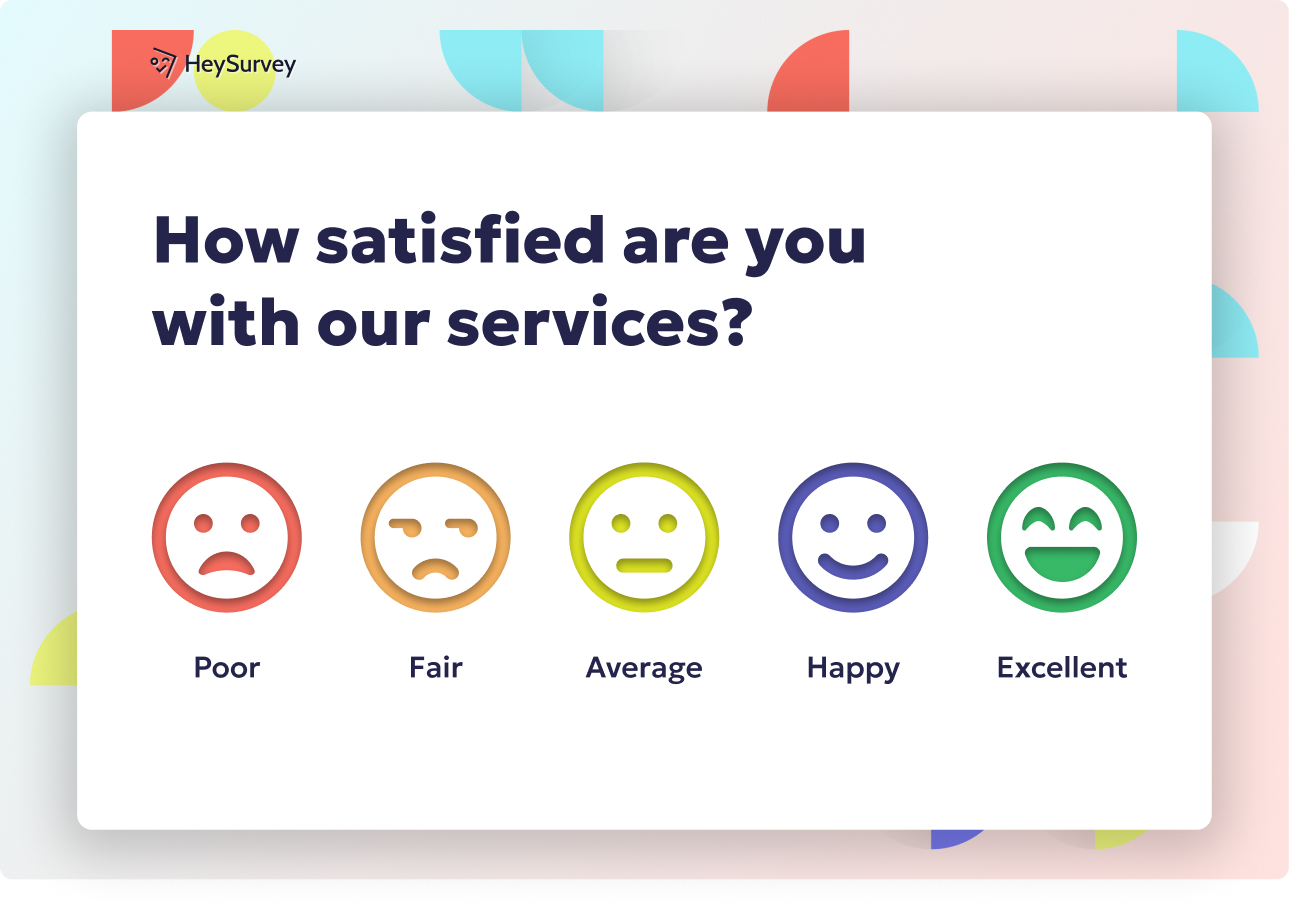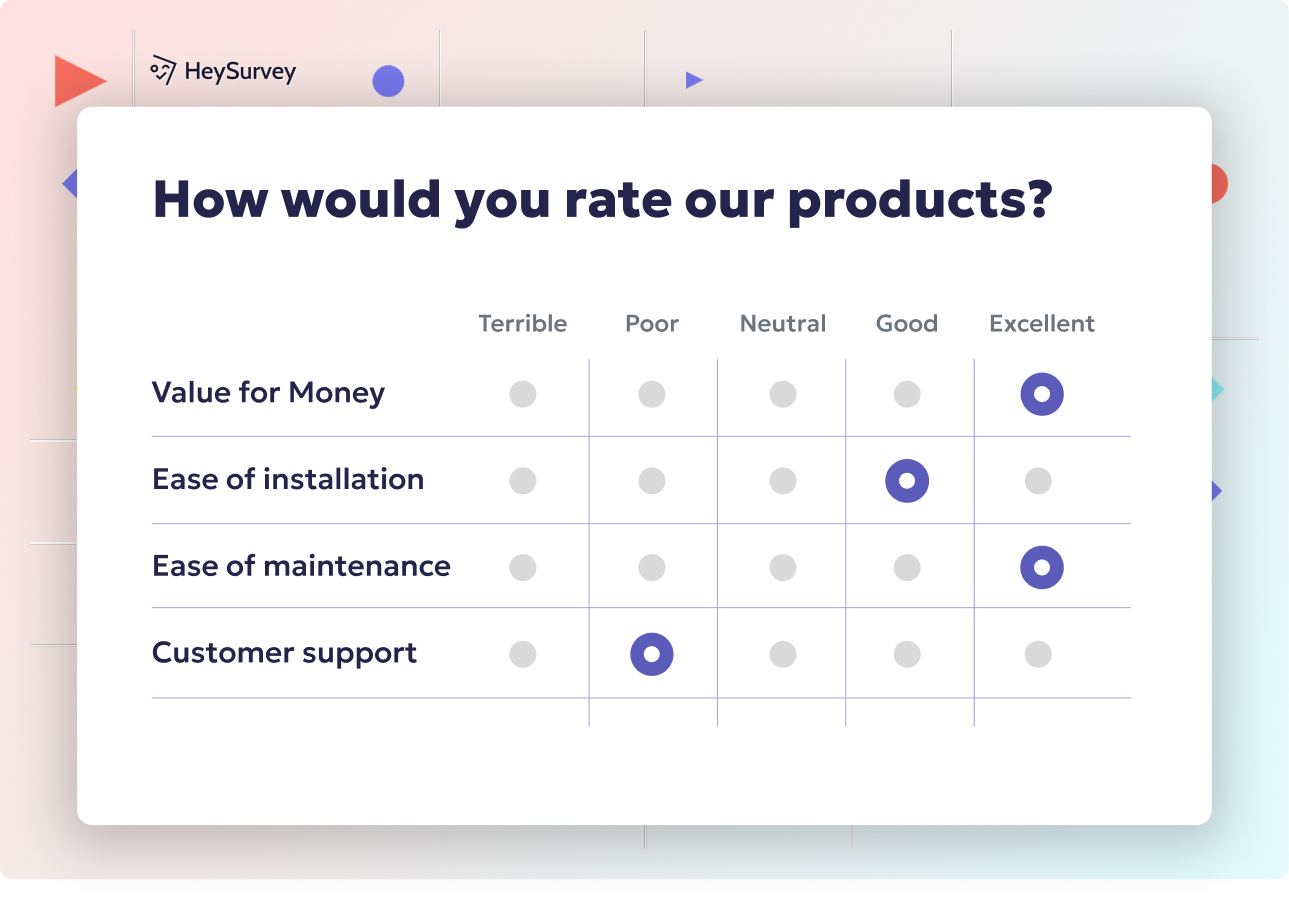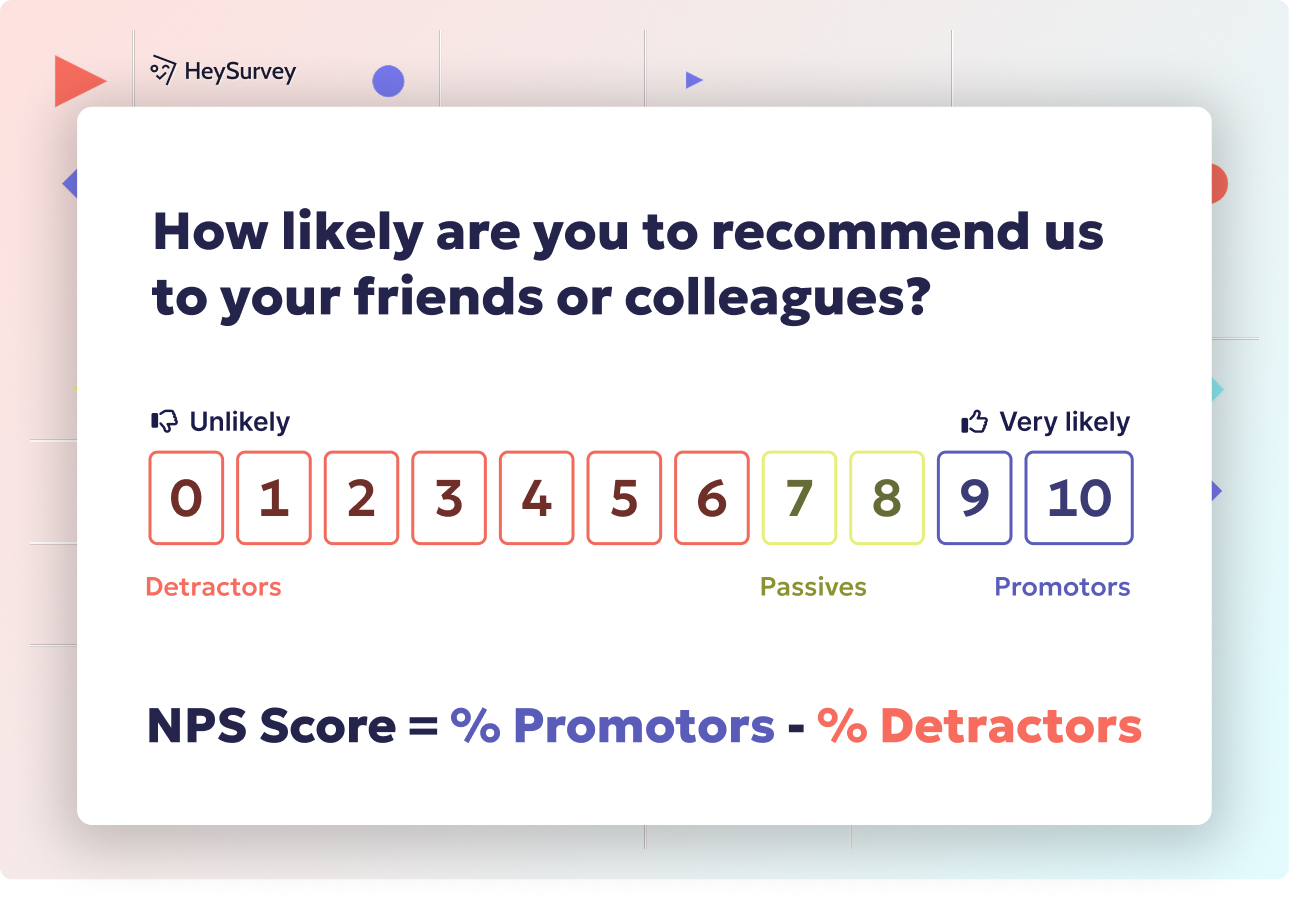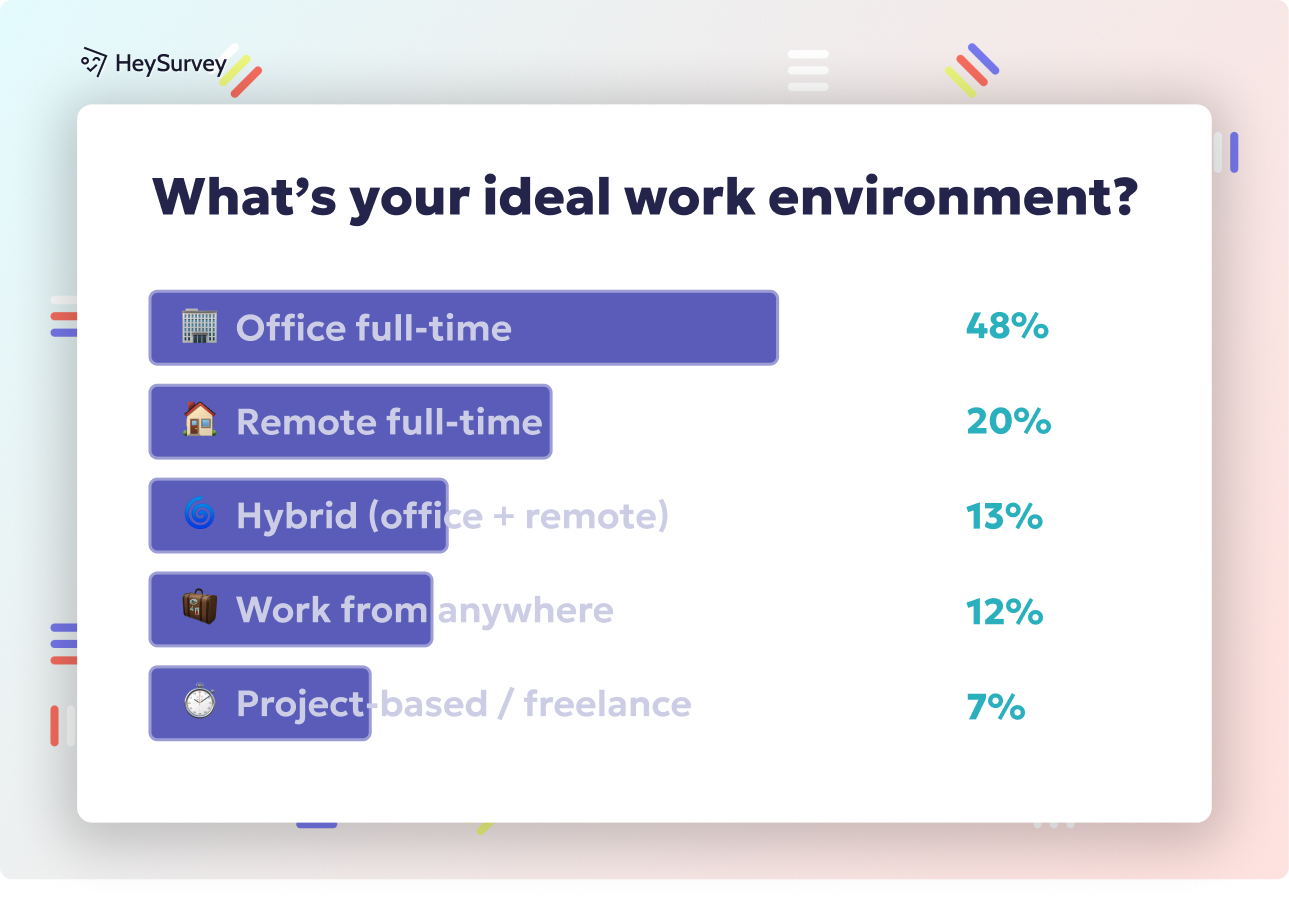31 Professional Development Feedback Survey Questions You Need
Explore over 25 professional development feedback survey questions covering training, e-learning, mentorship, skill gaps, and career growth insights.
Continuous learning is no longer a “nice to have”—it’s a business non-negotiable. Professional development feedback surveys are how modern organizations keep their learning and development engines humming, and their employees engaged and growing. Unlike general workplace satisfaction polls, these tools dig deep into career growth, learning experiences, and development opportunities at every stage. Ahead, we’ll unpack the winning survey types—covering everything from training events to 360-degree reviews—so you can ask better, smarter questions and fuel both employee satisfaction and business results.
Training & Workshop Feedback Surveys
Why and When to Use
After a team training or a high-energy workshop, everyone’s buzzing—but how can you tell what really landed? Training & workshop feedback surveys are your golden ticket for gathering insights while the experience is still fresh in everyone’s minds.
You want to pinpoint what worked and what flopped. Find out if the content hit the mark, if the facilitator worked their magic, and if the logistics were smooth as butter—all by simply asking. These surveys are a game-changer for spotting quick wins and easy fixes.
Timing is everything. For maximum honesty and accurate recall, surveys should reach in-boxes within 24–48 hours after the event. This keeps feedback crisp and actionable.
Here’s why you should use these surveys: * They capture immediate, honest participant reactions * You quickly learn what boosted learning and where confusion crept in * You spot standout sessions and instructors * They flag logistical or tech hiccups * They inspire future workshop topics directly from your team
Sample Questions
- How relevant was the training content to your current role and responsibilities?
- How would you rate the facilitator’s ability to engage participants and explain key concepts?
- What is your confidence level in applying the skills or knowledge gained from this session?
- What aspects of the session could be improved for future workshops?
- Are there specific topics or skills you would like covered in future training events?
Bite-sized, pointed questions like these form the backbone of a truly informative training evaluation. They keep you from guessing what your employees really need. Just keep it short, sweet, and focused—your survey shouldn’t take longer than a coffee break!
Combining crisp questions with a well-timed deployment lets you transform your training budget into a true investment in people—one that pays back in increased know-how, happier teams, and smoother operations.
Effective post-training feedback surveys should be concise, combining quantitative and qualitative questions, and administered promptly to capture actionable insights. (uniquedevelopment.com)

Here’s how to create your professional development feedback survey with HeySurvey in just 3 easy steps:
Step 1: Create a New Survey
Start by signing in or diving in without an account. Click “Create New Survey” and select either an empty survey for full control or choose from pre-built templates designed for professional development topics. This gives you a quick and structured head start that fits your needs.
Step 2: Add Questions
Next, click “Add Question” to include your carefully crafted professional development feedback survey questions. Pick from question types like choice, scale, text input, or NPS to match your question style. Customize each question with clear wording, mark required questions, and add images or descriptions to boost clarity and engagement.
Step 3: Publish Survey
When your questions look good and your survey flows smoothly, hit “Preview” to see exactly what respondents will experience. Make any last tweaks in the designer sidebar for colors and fonts. Then, click “Publish” to get your shareable survey link. Remember, publishing requires an account so that you can collect and review responses later.
Bonus Step 1: Apply Your Branding
Make the survey truly yours by uploading your logo and adjusting colors and backgrounds in the Designer Sidebar. This professional touch increases your team’s trust and engagement.
Bonus Step 2: Define Settings
Head to the Settings panel to set start/end dates, limit the number of responses, or add a redirect URL after completion. You can also enable options like allowing respondents to view certain survey results, keeping your process transparent and motivating.
Bonus Step 3: Use Branching for Smart Surveys
Add branching logic to customize the respondent’s path based on their answers. This keeps surveys relevant and concise by skipping irrelevant questions. Branching ensures every participant enjoys a smooth, personalized experience.
Ready to build your professional development feedback survey? Start now by clicking the template button below and see how HeySurvey makes it easy and even a bit fun!
E-Learning & Micro-Learning Module Feedback Surveys
Why and When to Use
When teams are upskilling at their own pace, you need a feedback loop as agile as their learning schedules. E-learning and micro-learning module feedback surveys are designed to check the pulse of digital learning experiences.
It’s not just about, “Did they finish the module?”—it’s about, “Was it worth finishing?” You want honest scoop on the platform’s usability, the clarity of objectives, and whether the learning sticks, not to mention any weird bugs or clunky navigation.
You’ll get the sharpest insights when learners complete surveys right after they finish a module or key milestone. This way, impressions are still vivid. If you’re running longer learning paths, you can pop in checkpoint surveys to catch issues early and often.
You might use these surveys to: * Find out if learners could easily navigate the course * Understand where they clicked, scrolled, or—let’s be real—zoned out * Pinpoint content gaps that slow down the learning journey * Track confidence to put new knowledge to use * Surface ideas for making digital learning more binge-worthy
Sample Questions
- How easy was it to navigate the e-learning platform and locate materials?
- Were the learning objectives for this module clear and understandable?
- Did the interactive elements (quizzes, simulations, etc.) enhance your engagement with the material?
- How would you rate the quality and relevance of the multimedia content (videos, images, etc.) used in this course?
- Do you feel confident in applying what you learned from this module to your work?
These online course survey questions put you right inside the learner’s experience. Think of each response as a breadcrumb leading you to smoother, more effective pathways for future digital modules.
The best part? Fast digital surveys make it easy to collect broad, honest feedback, without making anyone jump through hoops. That means better learning, happier teams, and a company that truly keeps pace with change.
Varied questioning and timely explanatory feedback in e-learning significantly enhance knowledge generalization among learners. (arxiv.org)
Mentorship & Coaching Program Feedback Surveys
Why and When to Use
Mentorship and coaching programs are where careers often catch fire—not just in theory, but in real day-to-day progress. Mentorship and coaching program feedback surveys help you keep these fires burning brightly.
When you want to know if matches are working or if wisdom is being passed on, these surveys shine. They give both mentors and mentees a safe space to share what’s working and what isn’t, from availability to trust to that all-important feeling of progress.
These surveys work best when sent at midpoint to troubleshoot early, then again at program close—so you can learn and improve for the next cycle.
You might leverage these surveys to: * Check whether mentors are accessible and actively engaged * Verify that program goals are resonating with both mentors and mentees * Discover if tangible, actionable advice is exchanged * Identify any relationship kinks—misalignment, unclear expectations, or mismatched schedules * Gauge whole-program satisfaction and areas to leap forward next round
Sample Questions
- How accessible and available was your mentor or coach throughout the program?
- Were the goals of your mentorship or coaching relationship clearly defined and aligned with your career development needs?
- Did you receive actionable advice or feedback that helped you progress toward your goals?
- How would you rate the trust and rapport in your mentor–mentee relationship?
- Overall, how satisfied are you with your experience in this mentorship or coaching program?
Strong mentorship is rocket fuel for careers, but only if programs are tuned to participant needs. Keep your questions specific and heartfelt, and treat the results as a blueprint for continuous improvement. When you do, your mentorship feedback survey becomes not just a data point, but a launchpad to greatness.
Skill Gap Self-Assessment Surveys
Why and When to Use
No one likes to admit a weak spot, but skill gap self-assessment surveys turn this necessary evil into a superpower. These tools empower employees to chart their own learning course, while helping organizations make smart decisions on who needs what, and when.
You don’t want a guessing game. With regular, honest self-checks—quarterly or bi-annual works well—employees spotlight where they shine and where their confidence wobbles. And managers? They get a clear picture for budgeting, training, and team planning.
Use these surveys to: * Map out current proficiency versus those must-have competencies for the role * Track which skills matter most, and which fall down the to-do list * Tap into individual ambitions (and hesitations) * Uncover what holds employees back—resources, time, or support * Build a learning pathway that’s tailored, not one-size-fits-all
Sample Questions
- How confident are you in your current proficiency level for each key skill required in your role?
- Which skills would you most like to improve or develop further in the next six months?
- What specific resources or support do you need to strengthen your skills?
- How do your current skills impact your effectiveness and performance in your current position?
- Please rank the following skills in order of priority for your professional growth.
Self-awareness is a secret weapon, and these guided competency self-assessment questions unlock it. You turn vague “I need training” requests into focused, actionable plans for real growth.
Greater clarity puts employees in charge of their own development, while managers get data to fuel the right investments. It’s a win–win for morale, budgets, and competency agility.
Regular self-assessment surveys empower employees to take ownership of their professional growth, leading to increased engagement and job satisfaction. (feedbackpulse.com)
Career Growth & Goal-Setting Feedback Surveys
Why and When to Use
Climbing the career ladder shouldn’t be a game of snakes and ladders. Career growth and goal-setting feedback surveys help both companies and employees turn aspirations into real advancement opportunities.
You roll out these surveys during performance reviews or before diving into big-picture succession planning. They shine brightest when you want to spot blockages, unlock ambition, and connect day-to-day roles with bigger dreams.
These surveys help: * Illuminate whether employees see a clear, achievable path forward * Measure satisfaction with the menu of current development opportunities * Expose what’s missing—support, sponsors, or learning options * Flag preferred learning methods (because not everyone loves webinars!) * Set realistic, mutual expectations for timelines and outcomes
Sample Questions
- How clear is your understanding of the career path options available to you within the organization?
- How satisfied are you with the professional development opportunities currently offered?
- Do you feel your manager supports your career growth and encourages goal-setting?
- What are your preferred formats for learning and career development (e.g., workshops, online courses, mentoring)?
- What is your expected timeline for achieving your next major career growth milestone?
The beauty of these career development survey questions is their ability to spark meaningful discussions—not just between employees and HR, but all the way up to the C-suite.
When aspirations and company pathways align, you build a motivated, future-ready team. And that payoff shows up in performance, retention, and culture.
360-Degree Development Feedback Surveys
Why and When to Use
If you want the full picture—not just the glossy, front-facing side—360-degree development feedback surveys are where multi-dimensional insights truly shine. Peer, manager, and direct report perspectives combine to reveal the real growth engine underneath your talent.
Deploy these mighty surveys before leadership development programs or at fixed intervals (once a year is a good rhythm). They’re powerful for surfacing blind spots, amplifying strengths, and providing nuanced developmental recommendations.
These surveys let you: * Assess competencies from all angles—leadership, collaboration, adaptability, and more * Reference specific, collective examples (not just one person’s take) * Pinpoint communication strengths and areas for a little polish * Generate concrete, crowd-sourced ideas for future development * Set more balanced, credible growth goals for individuals
Sample Questions
- How would you rate this individual’s leadership competencies (decision-making, vision-setting, team motivation)?
- How effectively does this person communicate with peers, subordinates, and management?
- How well does this individual collaborate across teams and adapt to changing priorities?
- What strengths have you consistently observed in this person’s performance?
- What specific developmental recommendations would you offer to help this individual grow further?
Structured 360 feedback surveys offer fresh perspectives you can’t get from one-on-one reviews alone. They convert everyday observations into actionable leadership development plans.
And the best part? Each point of view pools into a map of realistic, personalized growth—ideal for ambitious talent and organizations alike.
Best Practices & Dos and Don’ts for Professional Development Surveys
Let’s get real for a second: Not every feedback survey is a slam dunk. But with a few ground rules, your professional development surveys can break through the noise and spark change.
What should you do for survey success?
* Know exactly what you want to learn—clarity is king
* Keep questions concise (and avoid brain benders)
* Mix it up! Use both multiple-choice and open-ended questions
* Guarantee anonymity to boost honesty
* Act on what you hear—report back, and follow through
And what to ditch straight away?
* Forget long-winded, jargon-packed wording
* Don’t ghost your teams by surveying once and never following up
* Resist the urge to lump results together—demographics matter
* Avoid long delays in sharing survey findings
* Don’t hang everything on numbers—qualitative feedback is golden, too
A few quick wins for boosting response rates:
* Ensure every survey looks great and works on every device
* Offer a little incentive, even if it’s just public appreciation
* Schedule gentle reminders (but don’t nag)
* Sync survey frequency with learning cycles—right after events or milestones is best
Great surveys become two-way conversations, not just data dumps. When you put these best practices in action, survey participation—and impact—shoots up. Plus, you can capture true effective feedback collection that everyone actually uses.
Conclusion & Next Steps
Each survey type fuels a different aspect of a robust, continuous learning culture. When you tune into the details—what teams need after training, what they crave for career growth, where their blind spots hide—you stitch together holistic, actionable employee development insights.
Keep your feedback loops fresh and your survey toolkit evolving. Start sending smarter questions and watch engagement soar.
Now, it’s your move: Create or refine your own set of professional development feedback survey questions to transform learning at every level.
Related Feedback Survey Surveys

30 Catering Survey Questions to Boost Customer Satisfaction
Discover 25 insightful catering survey questions to improve your services. Explore our expert-cra...

30 User Feedback Survey Questions for Better Insights
Discover 40+ user feedback survey questions across 8 types to boost product insights, UX, and cus...

28 Environment Survey Questions to Measure Sustainability
Explore 25 environment survey questions to enhance your research—discover sample questions for ef...

